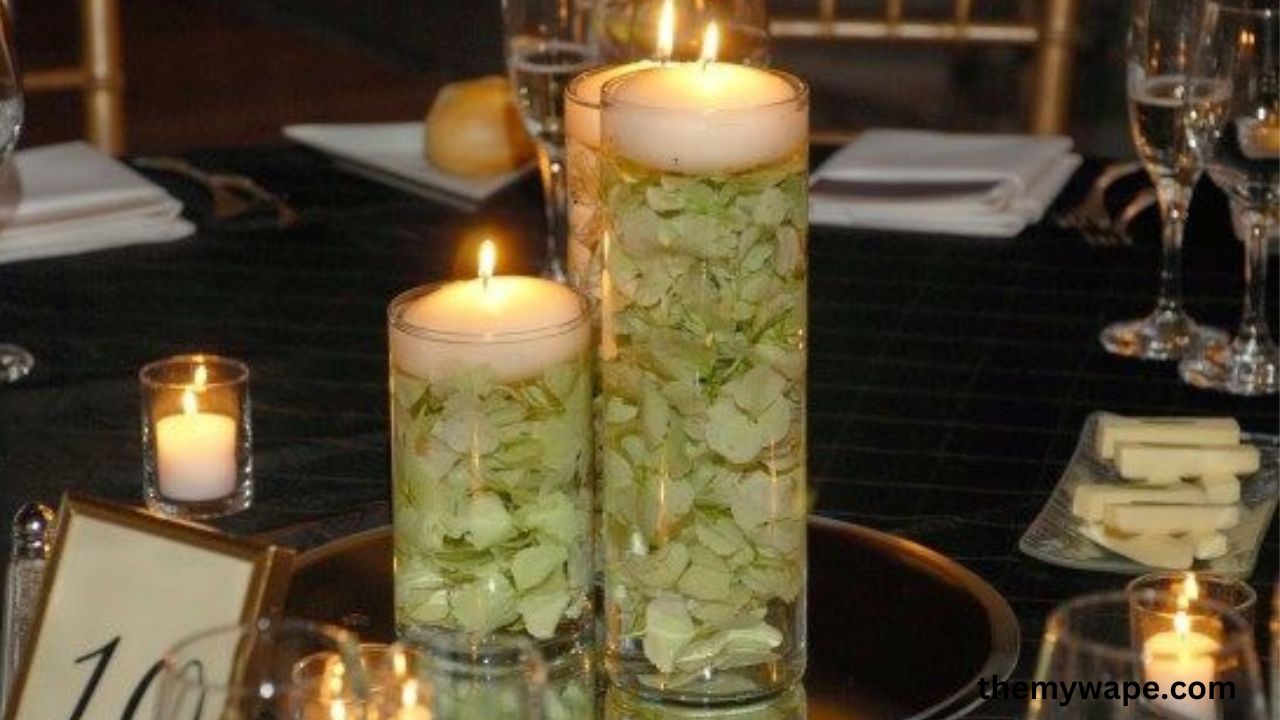Glass flowers are a mesmerizing blend of nature and art, capturing the delicate beauty of real blooms in a form that endures for generations. Whether you’re a fan of botany, an art enthusiast, or simply someone who appreciates fine craftsmanship, the world of glass flowers offers something truly magical. In this article, we’ll take a journey through the history, artistry, and various aspects of glass flowers, uncovering what makes them so special.
Table of Contents
The Art of Crafting Glass Flowers
The process of creating glass flowers is nothing short of an artistic marvel. It involves a level of precision and skill that few other art forms demand. Artists must be adept at controlling molten glass, shaping it into intricate forms, and adding vibrant colors that bring the flowers to life. The tools and techniques used have evolved over centuries, but the core principles remain the same, rooted in a deep respect for both the art and the natural world.
The Intricacies of Glass Flower Making
Creating a glass flower is an intricate process that requires careful attention to detail. The artist must first heat the glass until it reaches a molten state, then skillfully shape it using specialized tools. Each petal, leaf, and stem is formed individually, often taking hours to perfect. The final result is a delicate, lifelike flower that can be as small as a daisy or as large as a sunflower.
Tools and Techniques Used in Glass Flower Crafting
The tools used in glass flower crafting are as unique as the art itself. A blowpipe is essential for shaping the glass, while tweezers, shears, and paddles help refine the details. Techniques like lampworking, where glass is shaped over a flame, and flameworking, which involves using a torch to melt the glass, are commonly employed. Each technique requires a steady hand and a keen eye for detail, making glass flower crafting a true test of an artist’s skill.
Types of Glass Flowers
The world of glass flowers is as diverse as the flowers found in nature. From traditional designs that mimic real flowers to modern interpretations that push the boundaries of creativity, there’s a glass flower to suit every taste.
Traditional Glass Flowers
Traditional glass flowers are often modeled after real blooms, with artists striving to capture the exact colors, shapes, and textures found in nature. These pieces are celebrated for their realism and are often used in botanical displays and museum exhibits.
Modern Interpretations of Glass Flowers
Modern glass flowers, on the other hand, take a more abstract approach. Artists may play with form, color, and texture, creating flowers that are more about artistic expression than realism. These pieces are often bold, vibrant, and unique, making them a favorite among contemporary art collectors.
Materials Used in Glass Flower Creation
The materials used in creating glass flowers play a crucial role in the final product’s appearance and durability. Different types of glass and coloring agents can produce vastly different results, allowing artists to experiment with various effects.
Glass Types and Their Importance
There are several types of glass that can be used in flower making, each with its own set of properties. Soft glass is often used for its flexibility, while borosilicate glass is preferred for its strength and durability. The choice of glass affects everything from the ease of shaping the flower to its final appearance.
Coloring Agents and Their Effects
Adding color to glass is both an art and a science. Different minerals and oxides are added to the molten glass to achieve the desired hue. For example, adding cobalt can produce a deep blue, while copper can create vibrant greens. The amount and type of coloring agent used can also affect the transparency and texture of the glass, giving each flower a unique look.
The Process of Making Glass Flowers
Creating a glass flower is a multi-step process that requires patience, skill, and a keen eye for detail. Here’s a step-by-step guide to how these beautiful pieces are made.
Step-by-Step Guide to Creating a Glass Flower
Melting the Glass: The process begins with melting the glass in a furnace until it reaches a molten state. The temperature must be carefully controlled to ensure the glass is neither too soft nor too hard to work with.
Shaping the Flower: Once the glass is molten, the artist begins shaping it using a combination of tools and techniques. Each petal, leaf, and stem is formed individually, often requiring multiple reheats to keep the glass workable.
Adding Color: If the flower is to be colored, the artist will add the necessary minerals or oxides to the molten glass at this stage. The glass must be kept at a precise temperature to ensure the color is evenly distributed.
Final Touches: After the basic shape and color are achieved, the artist adds the final details, such as texture and veining on the petals. This step requires a delicate touch, as the glass is still fragile and can easily be damaged.
Annealing: The finished flower is placed in an annealing oven, where it is slowly cooled to relieve any internal stresses. This process can take several hours or even days, depending on the size and complexity of the piece.
Common Challenges in Glass Flower Crafting
Despite the beauty of the final product, creating glass flowers is not without its challenges. The glass can easily crack or shatter if not handled correctly, and achieving the desired color and transparency requires precise control of both temperature and materials. Even experienced artists sometimes struggle with these issues, making glass flower crafting a true labor of love.
Famous Glass Flower Artists
Over the years, many artists have made a name for themselves in the world of glass flowers. From pioneers who developed new techniques to contemporary artists pushing the boundaries of the craft, these individuals have left an indelible mark on the art form.
Pioneers in Glass Flower Art
One of the most famous names in glass flower art is Leopold Blaschka, who, along with his son Rudolf, created the Harvard Glass Flowers collection. Their work is celebrated for its incredible realism and attention to detail, setting a high standard for future artists.
Contemporary Glass Flower Artists to Follow
Today, many artists continue to explore and expand the possibilities of glass flower art. Some focus on traditional techniques, while others experiment with new forms and materials. Notable contemporary artists include Deborah Moore, known for her large-scale glass orchids and Dale Chihuly, whose vibrant and abstract floral sculptures have gained international acclaim.
Glass Flowers in Museums
Glass flowers are not just for private collections; many museums around the world showcase these beautiful pieces. One of the most famous collections is the Harvard Glass Flowers, a must-see for anyone interested in both botany and art.
Notable Collections Around the World
In addition to Harvard, museums such as The Corning Museum of Glass in New York and The Victoria and Albert Museum in London have impressive collections of glass flowers. These institutions celebrate the artistry and skill involved in creating these delicate works, offering visitors a chance to see them up close.
The Harvard Glass Flowers: A Case Study
The Harvard Glass Flowers, created by Leopold and Rudolf Blaschka, are a collection of over 4,000 botanical models made entirely of glass. These pieces were commissioned in the late 19th century for use in teaching botany and are renowned for their scientific accuracy and artistic beauty. Each flower is so lifelike that it’s easy to forget they’re made of glass, making the collection a true marvel of both art and science.
Glass Flowers in Home Decor
Glass flowers can add a touch of elegance and sophistication to any home. Whether used as a centerpiece, displayed in a cabinet, or incorporated into a larger design scheme, these pieces can enhance the beauty of your living space.
How to Incorporate Glass Flowers into Your Home
There are countless ways to incorporate glass flowers into your home decor. They can be displayed individually in a vase, arranged in a bouquet, or used as part of a larger floral arrangement. Glass flowers also make a stunning addition to a glass cabinet or shelf, where they can be admired for their beauty and craftsmanship.
Caring for and Maintaining Glass Flowers
While glass flowers are durable, they do require some care to keep them looking their best. It’s important to dust them regularly and handle them carefully to avoid breakage. If a flower does become damaged, some artists offer repair services, ensuring that your glass blooms can be enjoyed for years to come.
Glass Flowers as Gifts
If you’re looking for a unique and thoughtful gift, glass flowers are an excellent choice. They offer all the beauty of real flowers without the worry of wilting, making them a lasting reminder of your thoughtfulness.
Why Glass Flowers Make Unique and Thoughtful Gifts
Glass flowers are a gift that stands out. Unlike traditional flowers that fade over time, glass flowers are permanent, serving as a long-lasting symbol of your love or appreciation. They’re also incredibly versatile, suitable for a wide range of occasions, from birthdays to anniversaries.
Occasions Perfect for Giving Glass Flowers
Glass flowers make a wonderful gift for many occasions. They’re perfect for anniversaries, as they symbolize enduring love, or as a unique birthday gift for someone who appreciates fine art. They’re also a thoughtful choice for housewarmings, weddings, or as a special token of appreciation.
The Symbolism of Glass Flowers
Like real flowers, glass flowers carry a wealth of symbolism. Each type of flower has its own meaning, making them a powerful way to convey emotions and sentiments.
The Meaning Behind Different Glass Flowers
Different glass flowers can symbolize different things. For example, a glass rose might represent love and passion, while a glass lily could symbolize purity and renewal. Understanding the symbolism behind each flower can help you choose the perfect piece for any occasion.
Cultural Significance of Glass Flowers Globally
Glass flowers also have cultural significance in various parts of the world. In some cultures, they are seen as a symbol of immortality due to their durability and timeless beauty. Others are used in rituals and ceremonies, adding a touch of elegance and reverence to the proceedings.
The Market for Glass Flowers
The market for glass flowers is vibrant and diverse, with pieces ranging from affordable to incredibly valuable. Whether you’re a seasoned collector or just starting out, there’s something for everyone in the world of glass flower collecting.
Current Trends in Glass Flower Collecting
In recent years, there has been a resurgence of interest in glass flowers, driven by both nostalgia and a renewed appreciation for handcrafted art. Vintage pieces, in particular, have seen a rise in value, with collectors seeking out rare and unique examples from the past.
The Value of Vintage Glass Flowers
Vintage glass flowers are highly sought after by collectors, with some pieces fetching high prices at auctions and galleries. The value of a vintage glass flower depends on several factors, including its age, condition, and rarity. Pieces made by renowned artists or those with documentation are especially valuable.
DIY Glass Flowers
For those who love a creative challenge, making your own glass flowers can be a rewarding experience. While it requires some specialized equipment and skills, the results are well worth the effort.
Beginner’s Guide to Making Your Own Glass Flowers
If you’re new to glass flower making, it’s important to start with the basics. Begin by learning how to handle glass safely, then move on to simple shapes and designs. As you gain confidence and experience, you can experiment with more complex flowers and techniques.
Tips for Aspiring Glass Flower Artists
If you’re serious about becoming a glass flower artist, practice is key. Take the time to learn from experienced artists, attend workshops, and experiment with different techniques and materials. Over time, you’ll develop your own style and voice, creating glass flowers that are uniquely yours.
Environmental Impact of Glass Flower Production
Like all forms of art, glass flower production has an environmental impact. However, many artists and manufacturers are working to minimize this by adopting eco-friendly practices and materials.
Sustainability in Glass Flower Making
Sustainability is becoming increasingly important in the world of glass flower making. Many artists are now using recycled glass and non-toxic coloring agents to reduce their environmental footprint. Additionally, some are exploring new techniques that require less energy and resources, making glass flower production more sustainable.
Eco-Friendly Practices in the Glass Flower Industry
The glass flower industry is also seeing a shift towards more eco-friendly practices. This includes everything from using energy-efficient furnaces to sourcing materials locally. By supporting artists and companies that prioritize sustainability, you can enjoy beautiful glass flowers without compromising your environmental values.
Conclusion
Glass flowers are more than just beautiful objects; they are a testament to the skill and creativity of the artists who make them. Whether you’re admiring a delicate rose, a bold orchid, or an abstract interpretation of a bloom, glass flowers offer a unique and lasting way to appreciate the beauty of nature. Their enduring appeal, coupled with their versatility in art, home decor, and as gifts, ensures that glass flowers will continue to captivate and inspire for generations to come.
FAQs
What Are Glass Flowers? Glass flowers are handcrafted pieces of art made from glass, designed to replicate the appearance of real flowers. They are created using various techniques and materials, resulting in lifelike or abstract representations of botanical forms.
How Are Glass Flowers Made? Glass flowers are made by heating glass until it becomes molten, then shaping it using tools and techniques like lampworking or flameworking. The artist may also add color and texture during the process to achieve the desired effect.
Are glass flowers While glass flowers are made from durable material, they can still be fragile, especially if they are thin or have intricate details. Proper care and handling are essential to avoid breakage.
Where Can I Buy High-Quality Glass Flowers? High-quality glass flowers can be found at art galleries, specialty shops, and online retailers. It’s important to purchase from reputable sources to ensure the craftsmanship and authenticity of the piece.
Can I Learn to Make Glass Flowers at Home? Yes, with the right tools and training, you can learn to make glass flowers at home. Many artists offer workshops, and there are also online resources available for beginners. However, it requires patience, practice, and a commitment to safety.
You can see the latest updates on : MyWape



